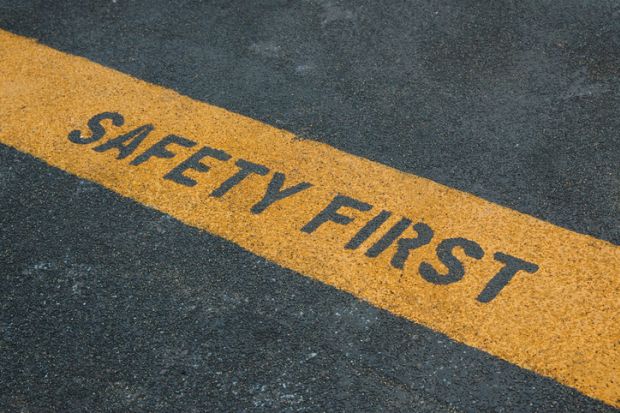Educators are in a precarious position with their myriad commitments to students, which range from students’ well-being to their ability to learn and master specific content areas.
But among the most crucial concerns for an institution of higher learning is whether it effectively contributes to a reflective and critical citizenry.
Since its early inception, US higher education has stressed as one of its core values the importance of maintaining a liberal democratic society. The philosopher John Alexander Smith embodied this sentiment in the early 20th century when he opened a lecture series by telling his students, “…if you work hard and intelligently you should be able to detect when a man is talking rot, and that, in my view, is the main, if not the sole, purpose of education.”
All good educators probably share Smith’s attitude at some point.
However, safe spaces, as they are currently demanded by students – zones free of physical or emotional distress, anxiety or judgement, or ideological confrontation – make it increasingly difficult for higher education professionals to instil in students the critical facilities needed to maintain a liberal democracy. Put simply, they don’t help students to detect when someone is “talking rot.”
Some faculty and administrators seem to agree. They have been pushing back against safe spaces, arguing that such areas isolate students from controversial, uncomfortable and even merely opposing ideas. However, there are those who maintain that students have the right to demand safe spaces regardless of their overall effects.
More broadly, the conversation about safe spaces has really been a conversation about free speech versus the needs of an institution’s (supposedly) more vulnerable students, as if there is a zero-sum game in which any gains by one group is met by the concessions of another. In other words, arguments that urge free speech on campus are looked upon by the other side as failures to address the discrimination of already marginalised groups, such as gender, religious, and race and ethnic minorities.
But there is another conversation about safe spaces that is hardly being had; namely, why campus leaders are so reluctant to reclaim them.
It is important to understand that students’ calling for safe spaces is not spontaneous, nor is it unwarranted. It is a response to actual student experiences on college campuses. Explicit racism appears to be alive and well at several institutions, and according to recent research, students identifying as black or African American are nearly three times more likely to feel physically unsafe at their campus than their white and Hispanic peers. Additionally, transgender and gender non-conforming students are far more likely than their peers to feel physically unsafe and uncomfortable being themselves on campus, neglected by their institution, and alienated from their campus community.
There is even evidence suggesting that students with conservative political views feel increasingly unwelcome on their campus.
When students demand safe spaces, they aren’t staging an explicit assault on free and open enquiry and discussion (although sometimes this is an unintended consequence); rather, they are addressing what they believe to be true impeders of a just and equal society. Students withdrawing from critical discussion because they feel unsafe is also at odds with liberal democratic values and is ultimately damaging to democracy.
Educators who have criticised and denounced students for wanting safe spaces seem to have missed that point.
Students have taken it upon themselves to demand spaces where people who feel unsafe can authentically express themselves and critically engage with like-minded others.
This might seem like a good thing, as it invites critical participation by people who would otherwise avoid it.
However, the problem is that the current “model” of safe spaces is exclusive rather than inclusive; join such and such group and engage critically with people who think and feel like you and simultaneously block out the anxiety-ridden confrontational stuff.
Educators have noticed this feature of safe spaces, but have so far lashed out against it instead of trying to guide and refine it.
They need to reclaim safe spaces and help students to reconceptualise them so that not only will people feel safe being authentic and critical in their expression, but that they also promote an inclusive arena for critical discussion and reflection where everyone’s voice is encouraged without threat or personal attack.
Safe spaces should not be done away with; instead, they should be reconceptualised as encompassing an entire institution and not just single identity groups.
Likewise, the conversation about safe spaces should change so that it is not solely about free speech.
The safe space conversation should be about inclusivity. It should be about understanding students’ experiences and about their perceptions of relations on their own college and university campuses. It should be about educators’ responsibilities to students and to the mission of higher education. It should be about guiding students and not stifling them when they feel the impulse to challenge social injustice and threats to a free and equal society. It should be about education rather than opposition, and educators need to rise to the challenge, not fight it.
Campus personnel should also work to facilitate an environment where ideas, and not individuals, are the subject of debate.
In this space, ideas are judged, critiqued and examined, and individuals are treated with respect. Students are encouraged, either through classroom exercises or other administratively engineered circumstances, or organic campus relations, to engage in good faith with a diversity of student groups as opposed to attacking individuals as representatives of an opposing ideology.
That students’ clamouring for a safe space provides a unique (and sometimes counter-intuitive) challenge to the liberal democratic mission of higher education does not mean that educators can simply abandon those students to ideological vortexes.
If anything, a safe space controversy is a sign that students need the support and guidance of their faculty and administrators, and not their scorn.
James Wicks is a doctoral student in education at Texas Tech University.
Register to continue
Why register?
- Registration is free and only takes a moment
- Once registered, you can read 3 articles a month
- Sign up for our newsletter
Subscribe
Or subscribe for unlimited access to:
- Unlimited access to news, views, insights & reviews
- Digital editions
- Digital access to THE’s university and college rankings analysis
Already registered or a current subscriber?



